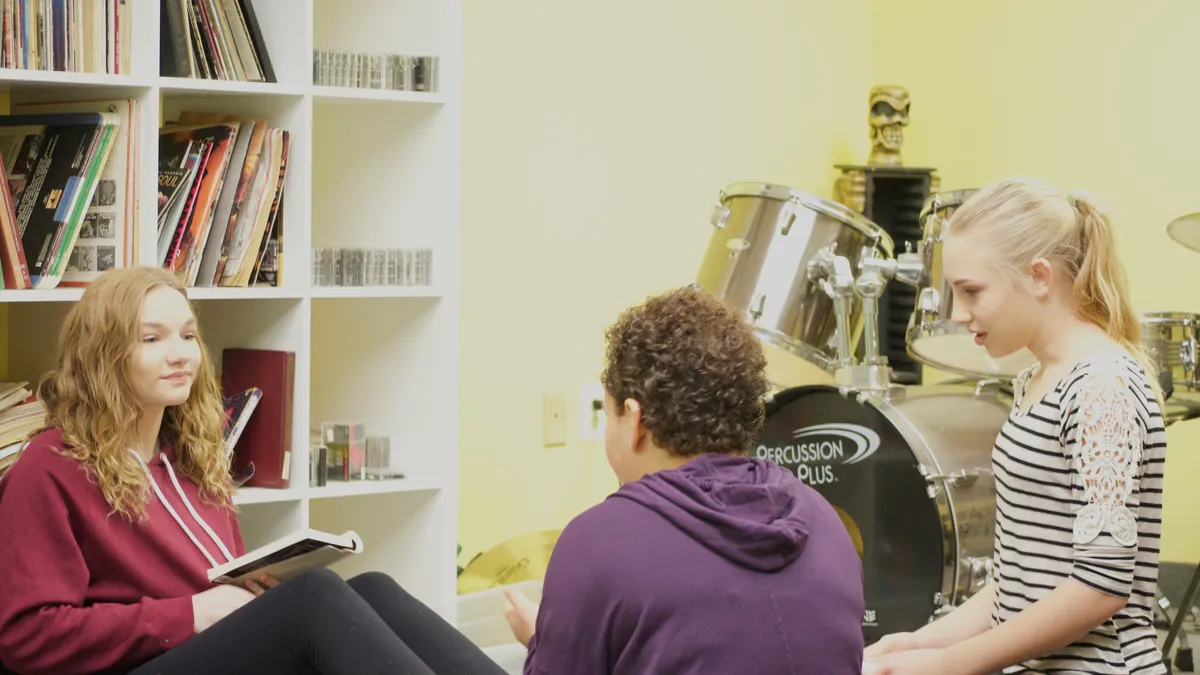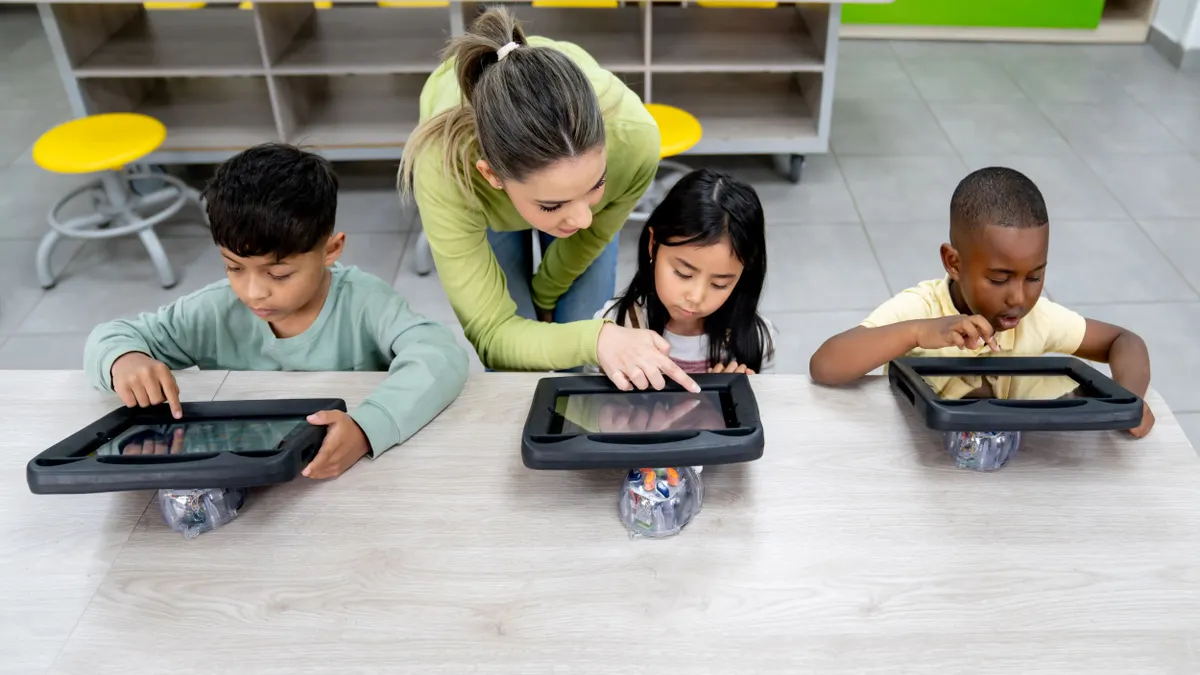Sarah Kiesewetter is a teacher at Golden View Classical Academy, a charter school in Golden, Colorado.
As a teacher, I regularly turn to online teacher forums in search of good ideas and helpful classroom practices, and to share my own successes with other teachers.
In recent years, the most common questions upper elementary educators ask are: “How are you incorporating Chromebooks into your classroom this year?” and “We are 1:1 (student to laptop), hooray! What activities do you have your students do with laptops?”
We can probably all agree that if technology — that is, students interacting with a device placed in front of them —unequivocally supports student achievement in the classroom, it is worth our consideration and efforts to find out exactly how best to use it. If, however, extended screen time does not improve overall student success, it might be time to rethink our mad-dash efforts to place a screen in front of every student in America and to incorporate these devices into every aspect of a student’s education.
Technology provides the advantage of delivering content in engaging, enjoyable ways. While videos might offer short, focused, content-rich material, students who passively engage with them miss all the glory of learning in a live classroom with a teacher who knows and loves her material.
Though the video might convey its message with fun graphics or a catchy soundtrack, it is devoid of the reticent moments that enliven classrooms. Passive engagement simply can’t stand up to the kind of active listening required of a student who is listening to his teacher or classmates explain something.
Actively listening, despite side conversations and temptations from other students to disengage, is an important skill for students to develop as they grow up. It requires agency and patience on the part of the student to be present, mind and body, without any gimmicks or flashy scenes.
Direct teacher instruction provides a learning environment in which the content is discovered, rather than hastily packaged and delivered, and it rejects the passivity of allowing a student to simply watch something on a screen. Forming an image in one’s mind from the spoken word is a task a video steals away from the student.
I once taught in a classroom where each student, wearing headphones, was watching some program or practicing coding or typing on an individual computer. They were isolated in their own worlds, disengaged from their classmates, and focused solely on the screen in front of them. I realized I served no other purpose than to be a babysitter for that class.
With no connection or live conversation going on, what were students missing? There is something important in that one word: conversation. We bemoan the fact that as a society we lack civil discourse, and the only way people “connect” nowadays is to throw vitriol through online public forums with no thought about how words might hurt those on the other side of the screen.
I can’t help but think this lack of the human element in education has something to do with it. When we teach students to engage with one another and with their teacher, they learn to sift through all the spoken words and find the important bits. They learn to pick up and respond to real human emotions present in any discussion.
Further, they learn to emulate the art of discourse they practice with each lesson. No tablet or laptop can replicate a live discussion when there is only one conversant present, nor can they teach the virtue of empathy our young people desperately need. Developing that virtue requires actually experiencing it — practicing it and receiving empathy from others.
Another crucial element in the learning process is how we record what we learn. Is it better for students to use a computer or to use traditional pen and paper for notes? Recent research shows the act of writing something down, of forming the words that are a reflection of one’s own thoughts, is critical for retention and analysis of material.
Because we simply can’t write as quickly as we can type. Writing demands, again, active agency on the part of the student. He must use the skills of summarizing, of identifying the main idea and supporting details, and of putting aside small details in order to have the time to keep up with a lesson.
In a classroom where pens and paper are required, students are taught precisely how to do this and have thousands of hours of practice in the art of note-taking. The distractions of a screen are entirely removed; writing demands the writer give himself to the task at hand.
It’s easy to take someone else’s thoughts and memorize the parts you need; it’s much more difficult and rewarding to take someone else’s words and make them your own. The act of seeing the teacher teach, of listening to the teacher teach, and of writing down what the teacher teaches and what you think about it provides a much stronger connection between ideas and words.
All in all, their work is worth the effort — and patience and diligence are at the heart of a classroom that doesn’t hand itself over to the 1:1 growth mindset.




















